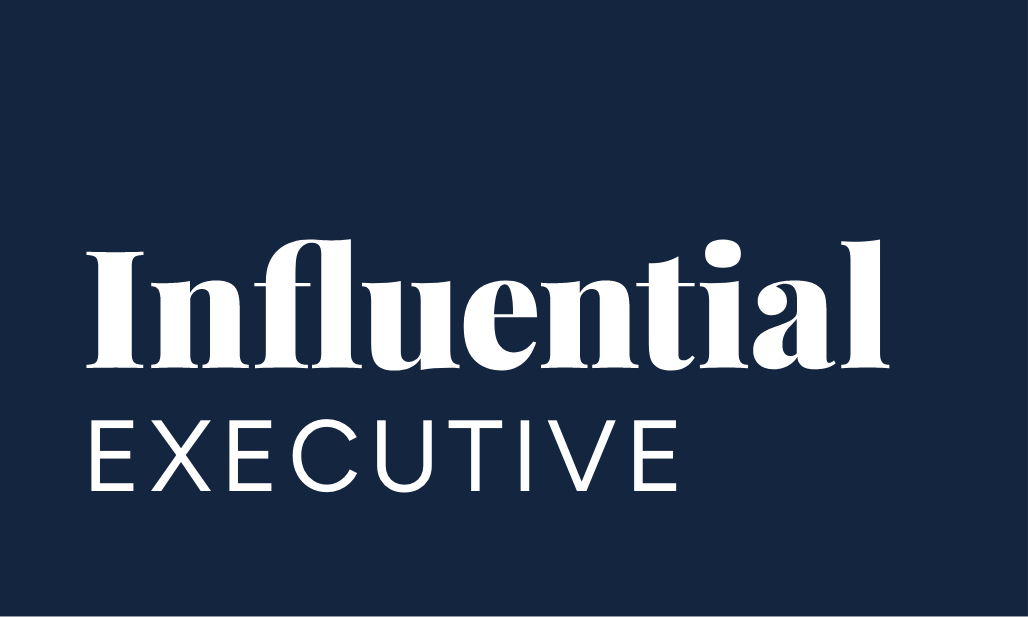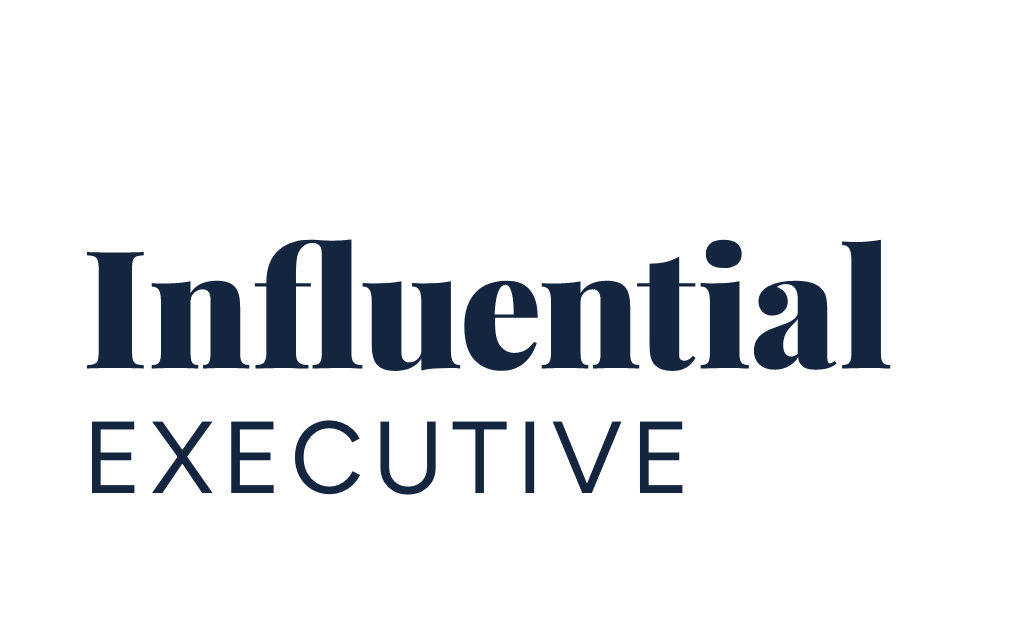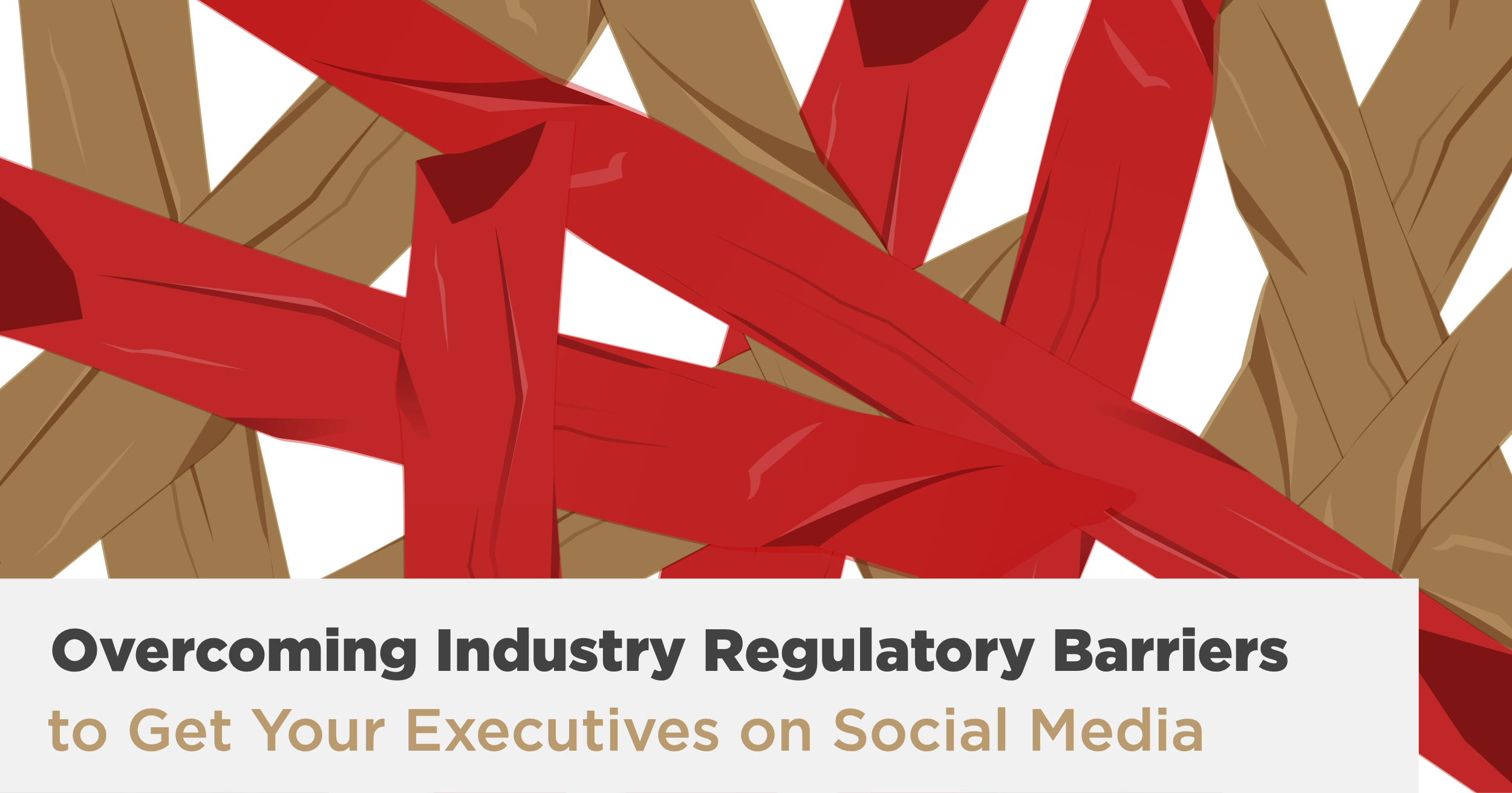For years, executives and even some brands used the fact they operate in a regulated industry to avoid developing a social media strategy and presence. From various sectors of the financial services industry and the healthcare industry to the alcohol and cannabis industries to name a few, there are a variety of regulations that affect marketing and advertising, including social media. This presents marketers with tricky social media barrier to navigate.
However, this does not mean that companies and their executives can do nothing. Having worked with both brands and their key executives to establish a social media presence in several of these industries, we found there are two key steps in developing a successful marketing program in highly-regulated industries. First, it is about clearly understanding the regulatory constraint on any marketing or social media program. The second step is that marketers must design a program and an appropriate review and approval process to comply with industry regulations to minimize the risk of non-compliance.
Example Industry #1: The Financial Services Industry
The financial services industry faces regulations from multiple bodies, including the Financial Industry Regulatory Authority (FINRA) and the U.S. Securities and Exchange Commission (SEC). Some of the biggest issues relate to topics such as direct endorsements of specific stocks, direct investment advice, solicitations, guarantees of return, and results or any kind of misrepresentation of the products or services offered. Additionally, inside information that could impact stock price, inappropriate disclosures or claims about company valuation, or financial position deemed to be false or misleading can also cause issues.
Of course, an extreme example of this was Elon Musk’s tweet on August 7, 2018 that cost the company $20 million in SEC fines:
Am considering taking Tesla private at $420. Funding secured.
— Elon Musk (@elonmusk) August 7, 2018
Example Industry #2: The Healthcare Industry
One of the biggest issues in the healthcare industry is compliance to the Health Insurance Portability and Accountability Act (HIPAA), which centers around protecting patient’s data and avoiding disclosure of any Protected Health Information (PHI) of all patients. This includes using patient names, showing full face photos among other identifying information.
The second major compliance area is Food and Drug Administration (FDA) disclosures, particularly when it comes to sharing or recommending pharmaceutical products. Some social media influencer programs have had compliance violations due to lack of full and/or proper disclosures.
For example, when Kim Kardashian endorsed a morning sickness medication, her link to a disclosure page was deemed insufficient. She was required to re-post with the full drug disclosure of potential risks or the limitations of using the drug.
Overcoming Regulatory Constraints
With these constraints in mind, it is still absolutely possible to develop a strategic social media program that drives business objectives.
In fact, established, credible healthcare organizations and their key executives and leaders have an important role to play in educating patients and the public by countering disinformation often spread on social media. In the event of a public health crises, such as the COVID-19 outbreak, the role your organization and leaders play in providing timely and useful information is key. By having a firmly established and credible social media presence, organization and leaders are positioned to cut through the noise of rumors and misinformation with the facts and key information needed for the public to best protect themselves and respond appropriately.
Similarly, financial services executives and leaders have the opportunity to stand out as thought leaders, while educating their target audiences on topics that make financial decisions easier and more accessible. When major market events take place, like a correction or jump, well-positioned executives with established audiences and reach will be a source of useful information that can prevent panic and poor decisions. They will also often be more likely to be consulted by media and offered interviews or speaking opportunities as a result of their prominent digital position.
Developing Your Compliant Social Media Program
Step 1: If you are operating in a regulated industry, the first step is to understand all of the regulations that may constrain your program. Review documentation provided directly by the regulatory bodies to understand exactly what is and is not allowed.
The next two steps are the same, whether in a heavily regulated or non-regulated industry.
Step 2: Define your overall social media strategy, using a process that clearly starts with your business goals. We recommend starting with a clear set of social media objectives, including key pillars or topic areas to focus on for public education.
Step 3: Determine which of your executives should have a social media presence and then the objectives and strategic thought leadership pillars their presence will directly support. The linked article provides a set of criteria to help make this decision.
Keep in mind that the organization’s social media presence may cover a wider range of topics, while individual leaders and executives may focus on specific areas of personal expertise and focus.
Step 4: With the foundational elements in place for the organization and key leaders, a content plan can be created that aligns to these objectives and topic areas. Start by determining the types of content and campaigns that drive to objectives without violating industry regulations.
For example, in the healthcare industry, an educational campaign on a particular illness that conveys best practices to avoid getting sick could feature a video of a doctor sharing their insight alongside infographics that share important information and key steps. However, an example of content that would violate HIPAA policies is including unblurred footage of patients in the waiting room at the hospital.
Similarly in the wealth management industry, while a campaign cannot promote specific endorsed investments or provide investment advice, a key leader could produce a video to share industry analysis and fundamentals to educate the firm’s target audience. This also establishes himself/herself and the firm as a strategic thought leader with interesting and useful perspectives.
Step 5: Define the review and approval process. This is a critical step in regulated industries and is often the area that overwhelms some organizations. The key is to approach it practically and to recognize that while the process will initially be time consuming and potentially messy, over time and under the right leadership it can become streamlined and efficient.
Understand What Causes a Social Media Barrier
A typical process we have helped put in place with clients includes the first level of review taking place within our agency by an editor who is reviewing the content our team has created. Having a specific checklist and/or guide to clearly lay out things to look for can be a very helpful tool in ensuring nothing major is overlooked. Then, the internal client marketer takes a look at the already reviewed and edited posts to provide any further feedback, which is often more focused on brand messages, tone of voice, and minor content adjustments. Over time, this step takes less time to complete. The marketing-approved content then goes to the compliance department for a final look to ensure no regulatory nuances have been overlooked. With compliance sign-off, content is scheduled and posted.
One final area to be aware of is having clear guidelines and an approval process (if required) on proactive social media engagement, for example comments or reactions on LinkedIn made from the executive’s social profile. This kind of engagement is often key to growing their presence consistently and to improving overall engagement and reach of his or her account.
As a result, marketers developing a strategy for both brands and executives must establish a clear review process and guidelines that take into account the nuances between the two marketing programs. Understanding obstacles that present itself as a social media barrier is key.


